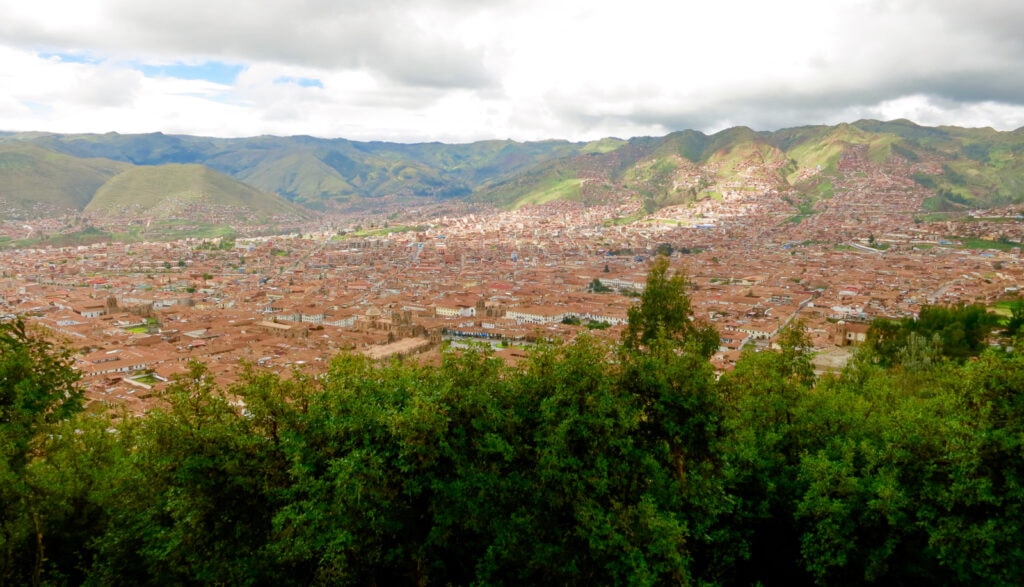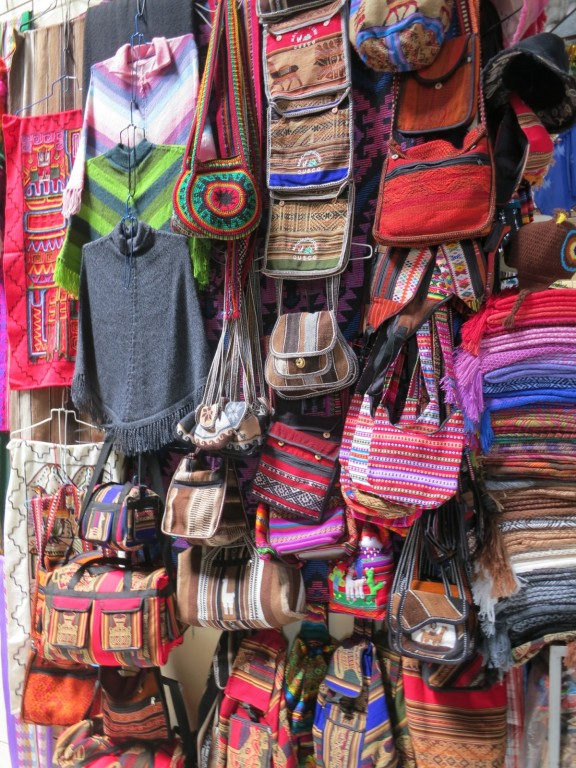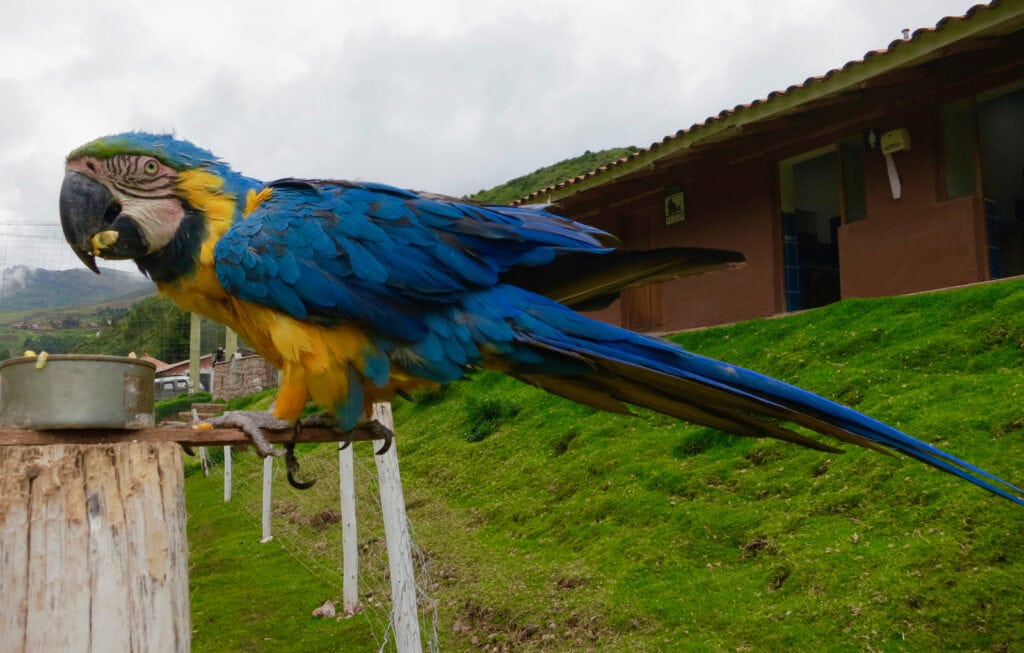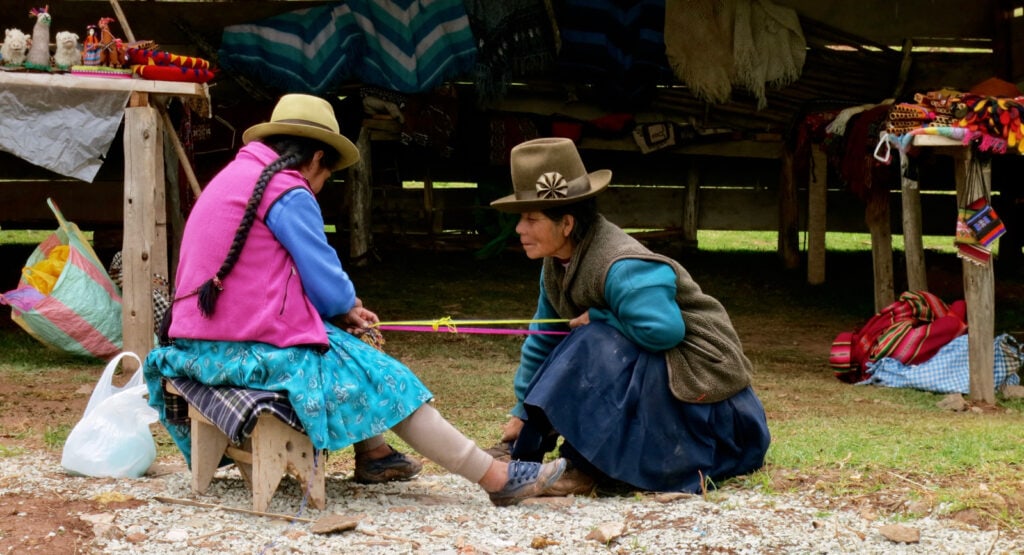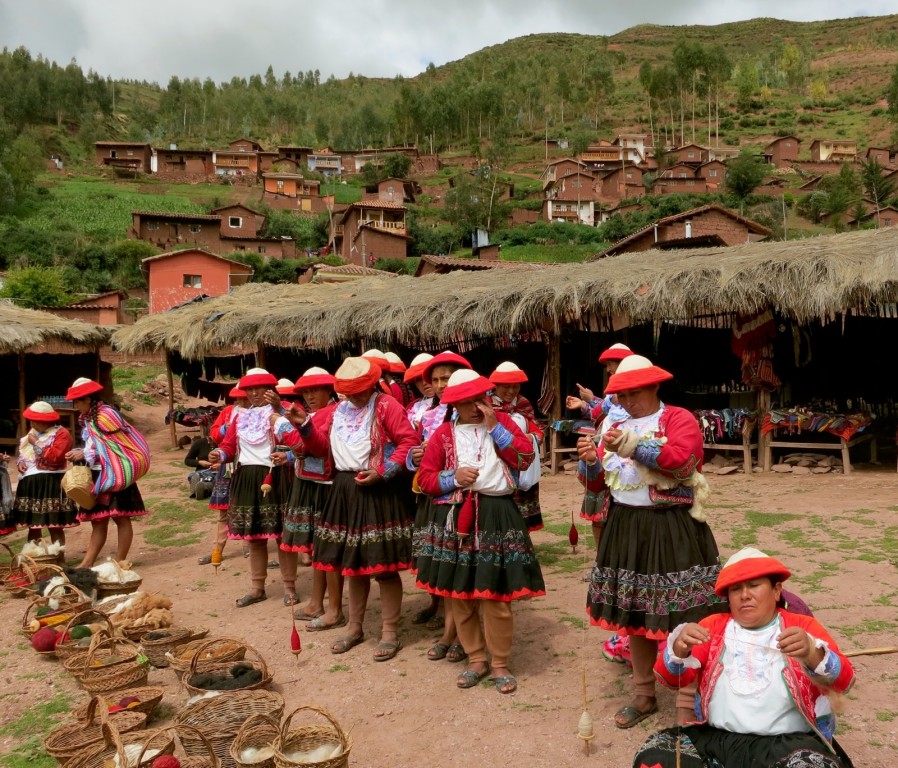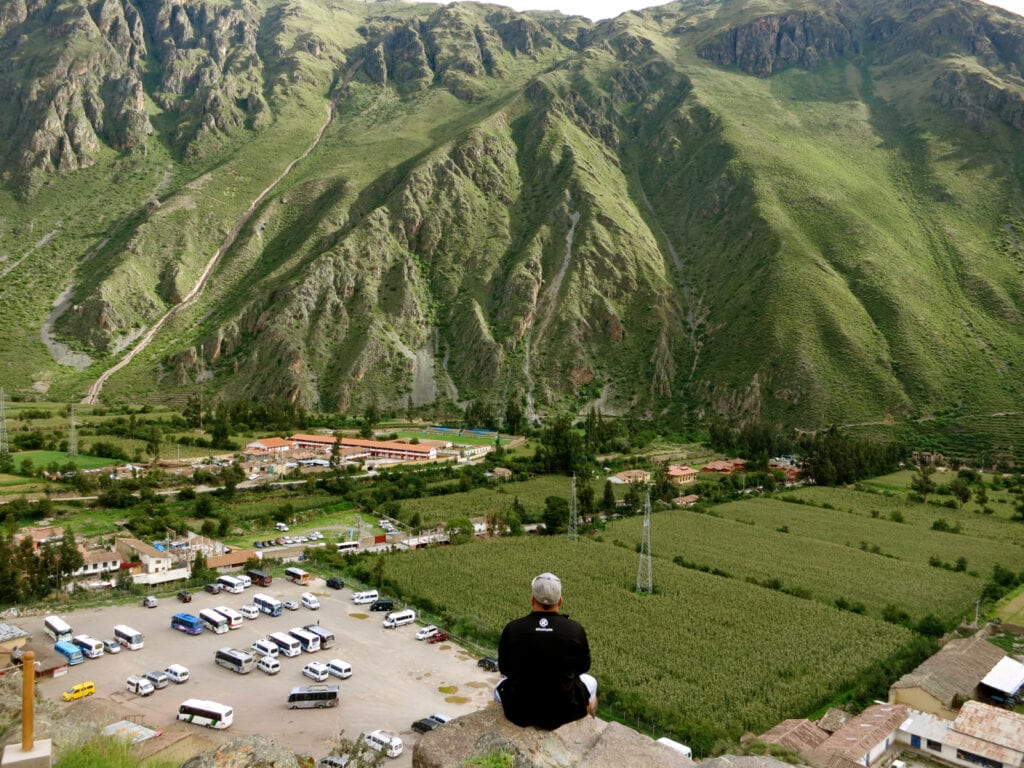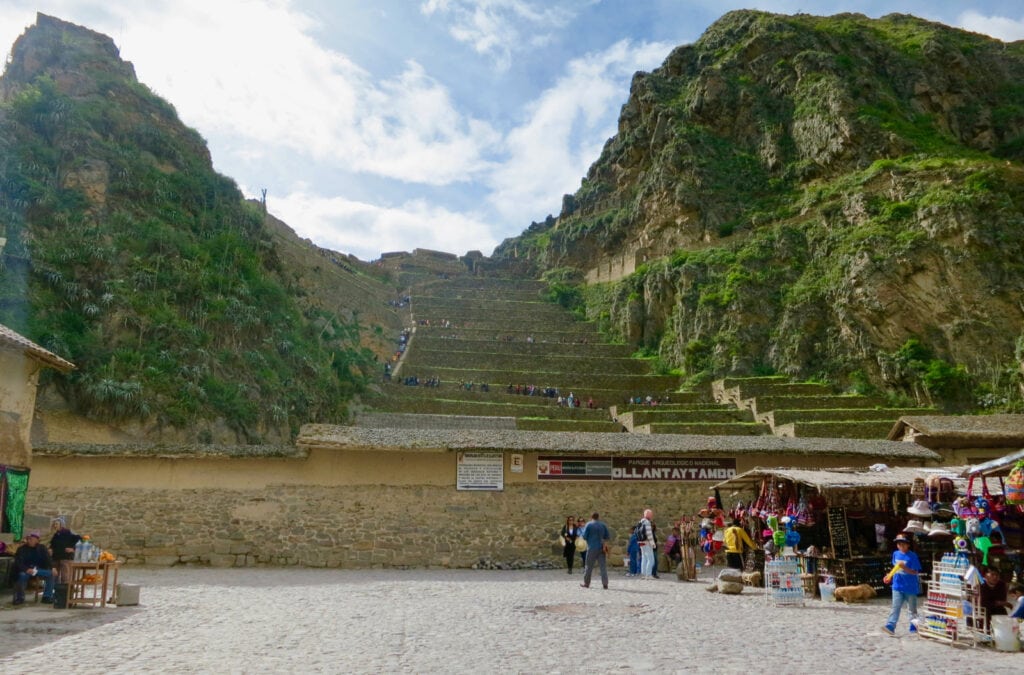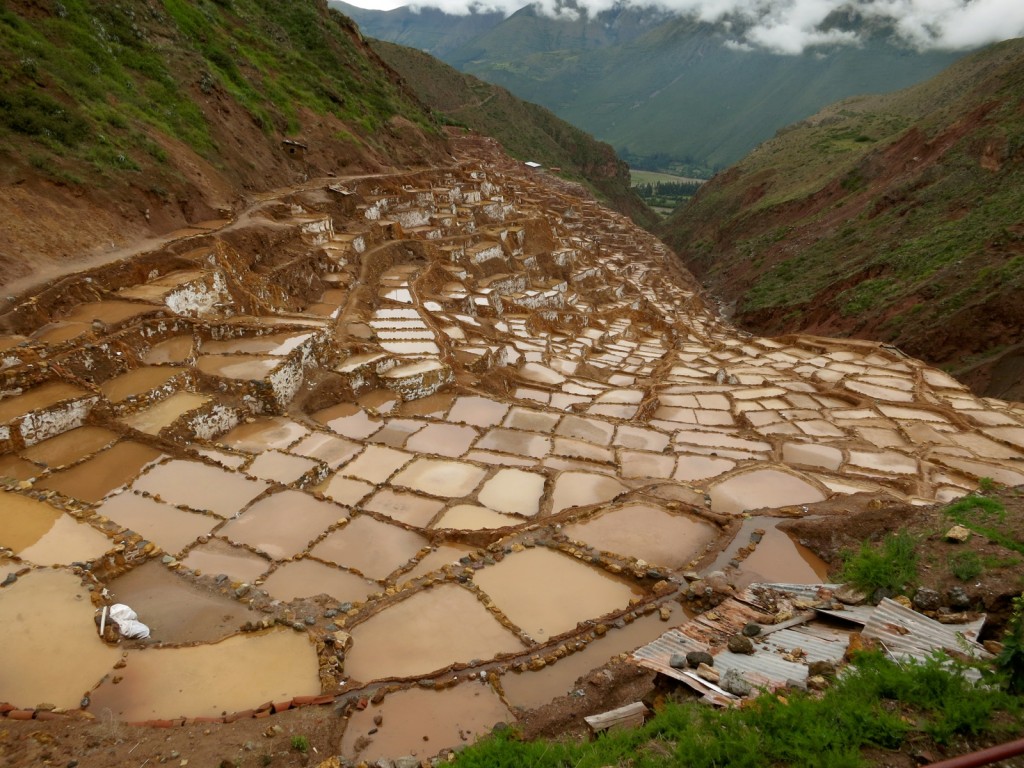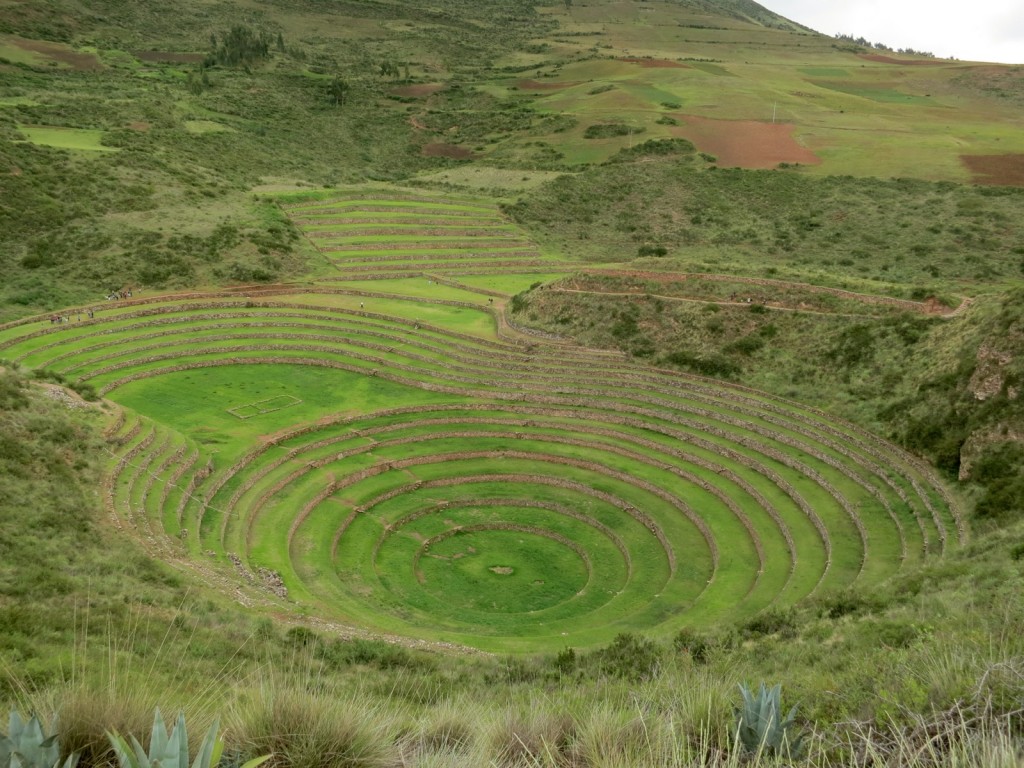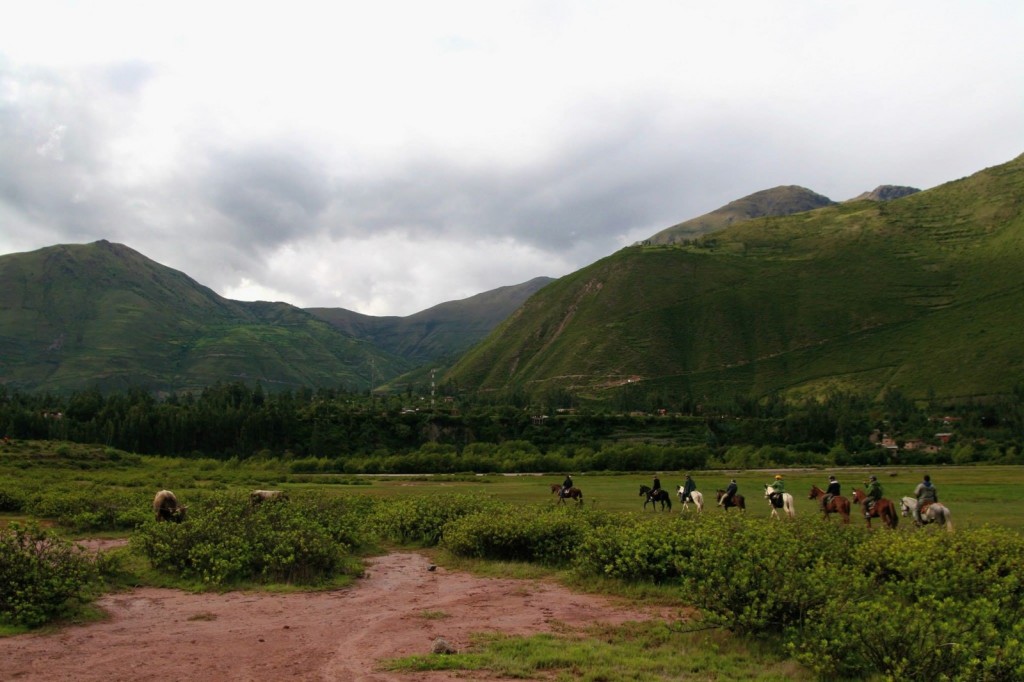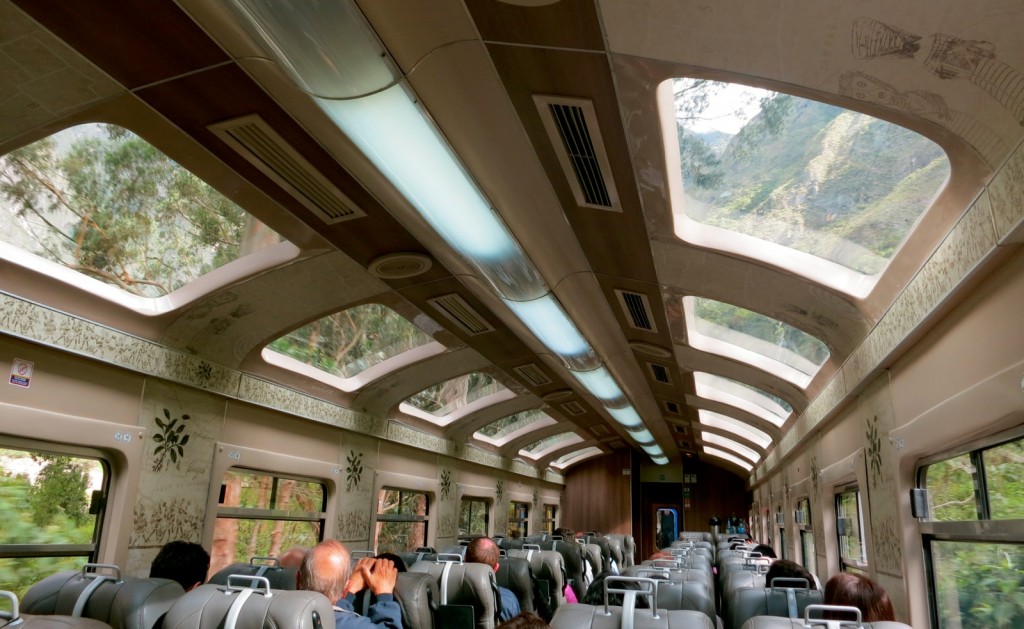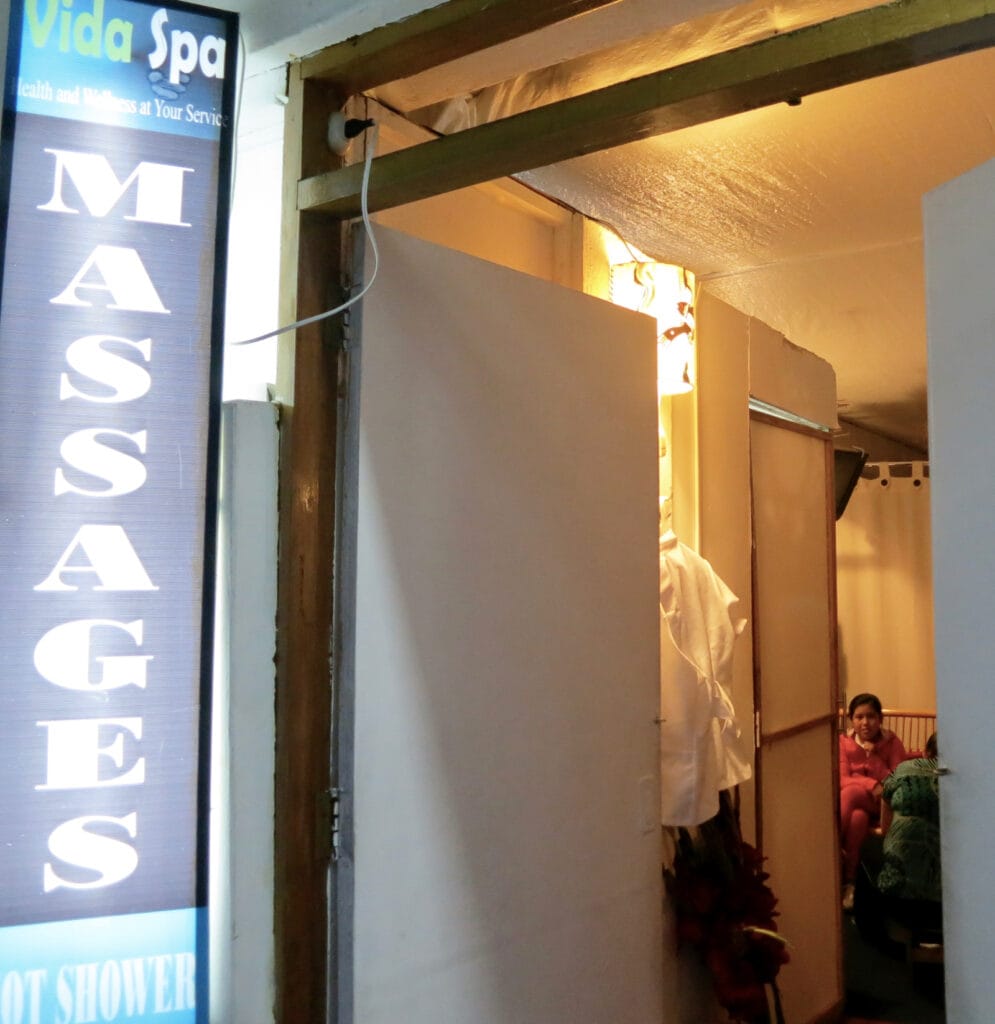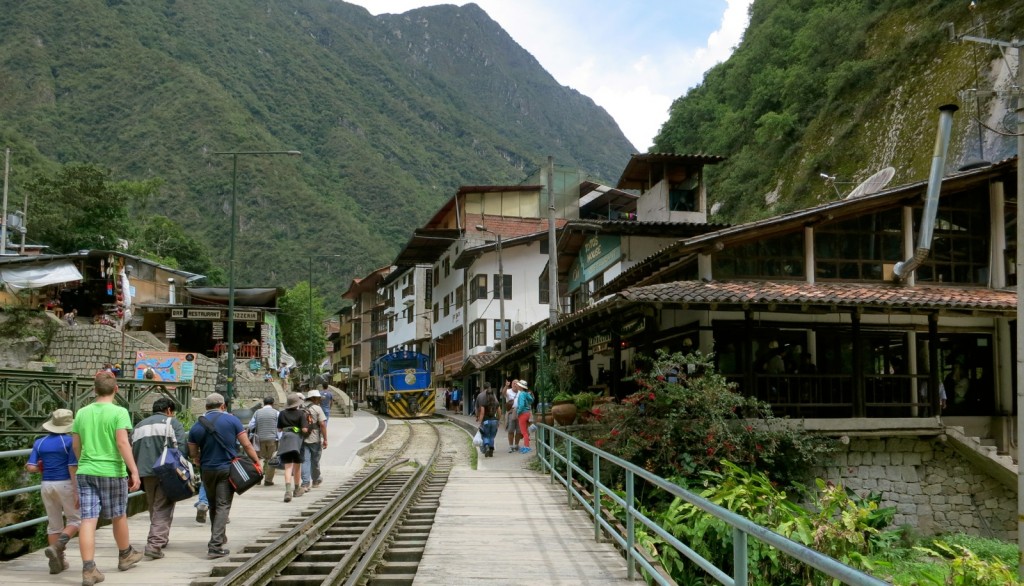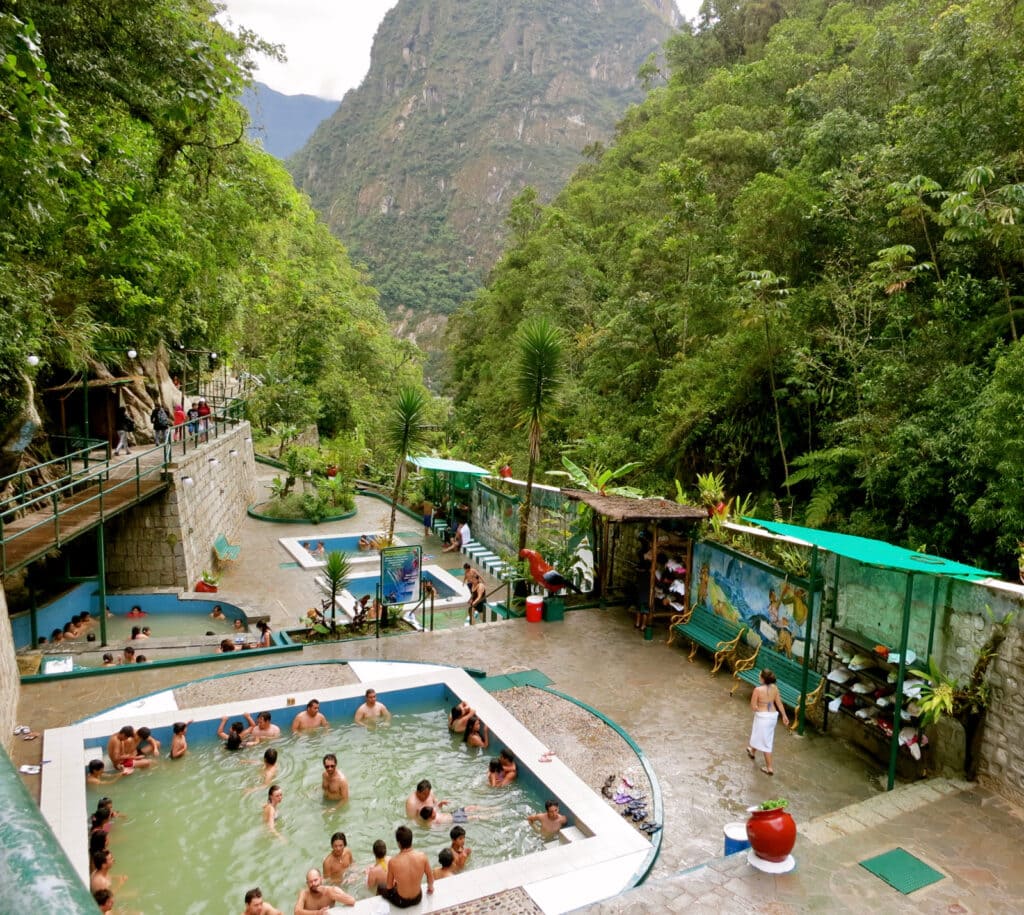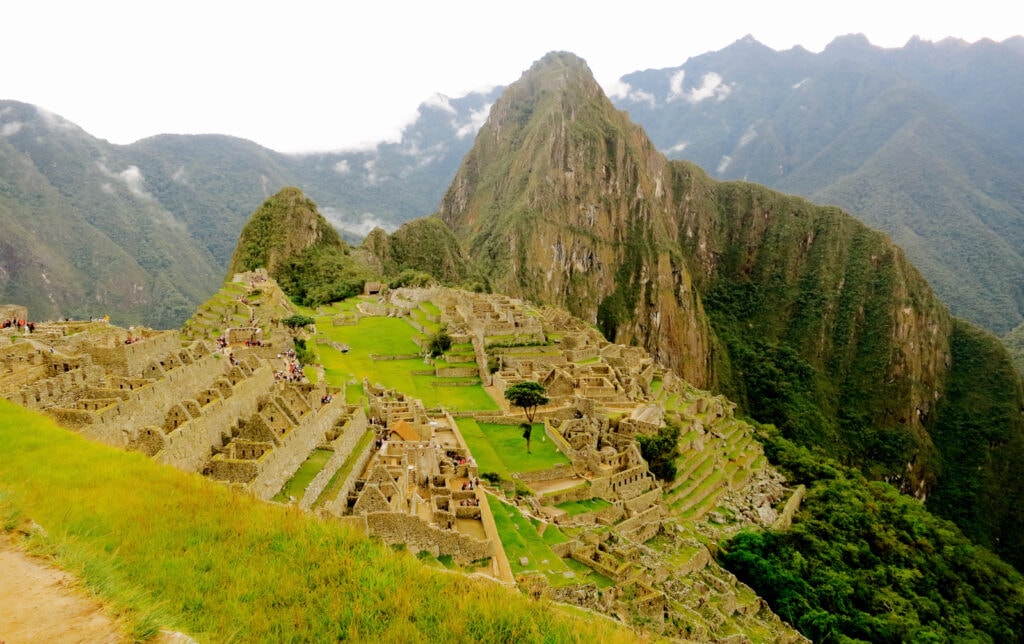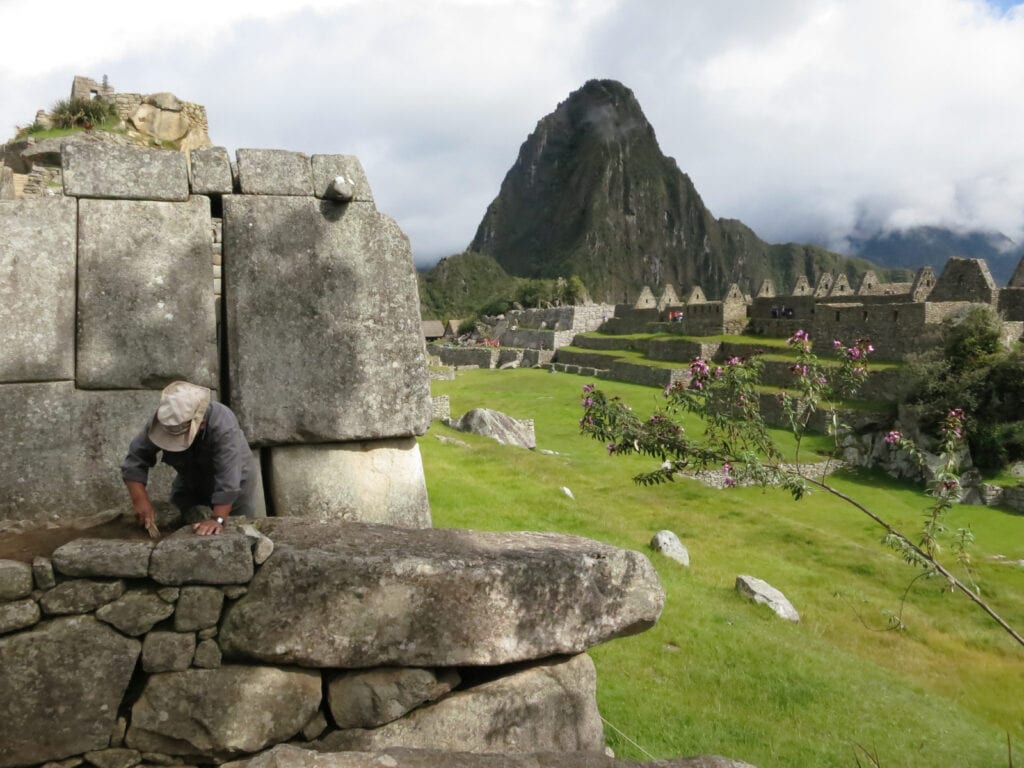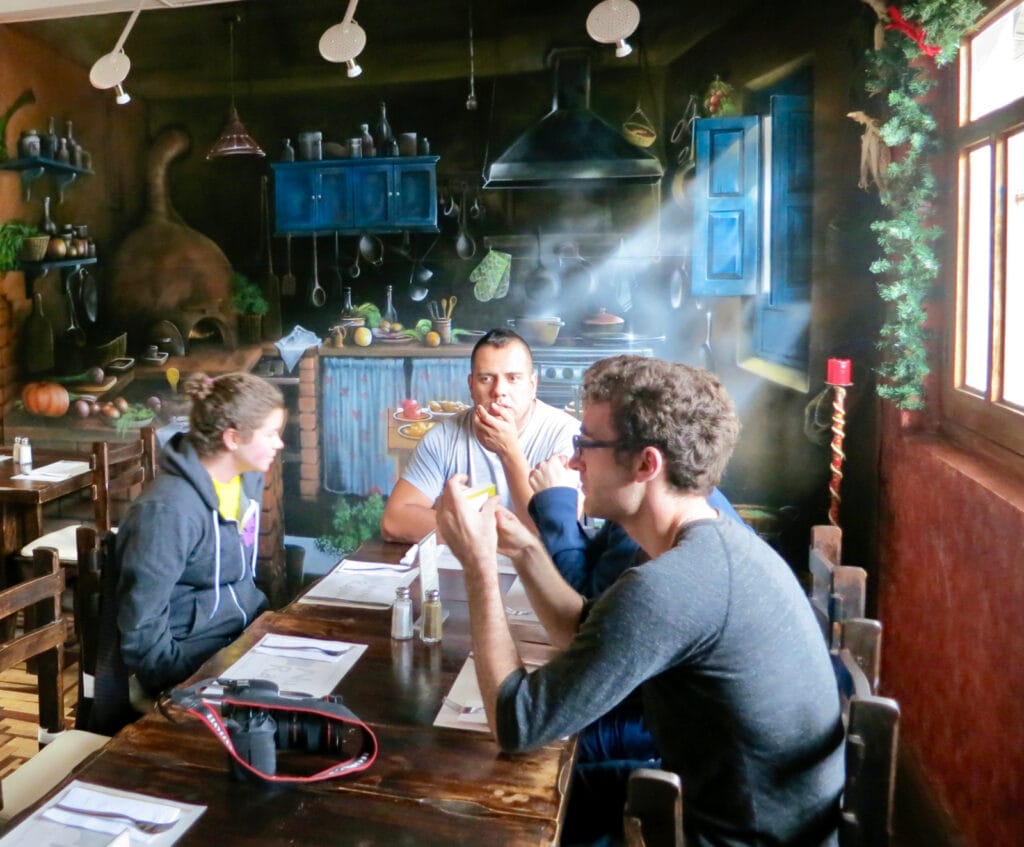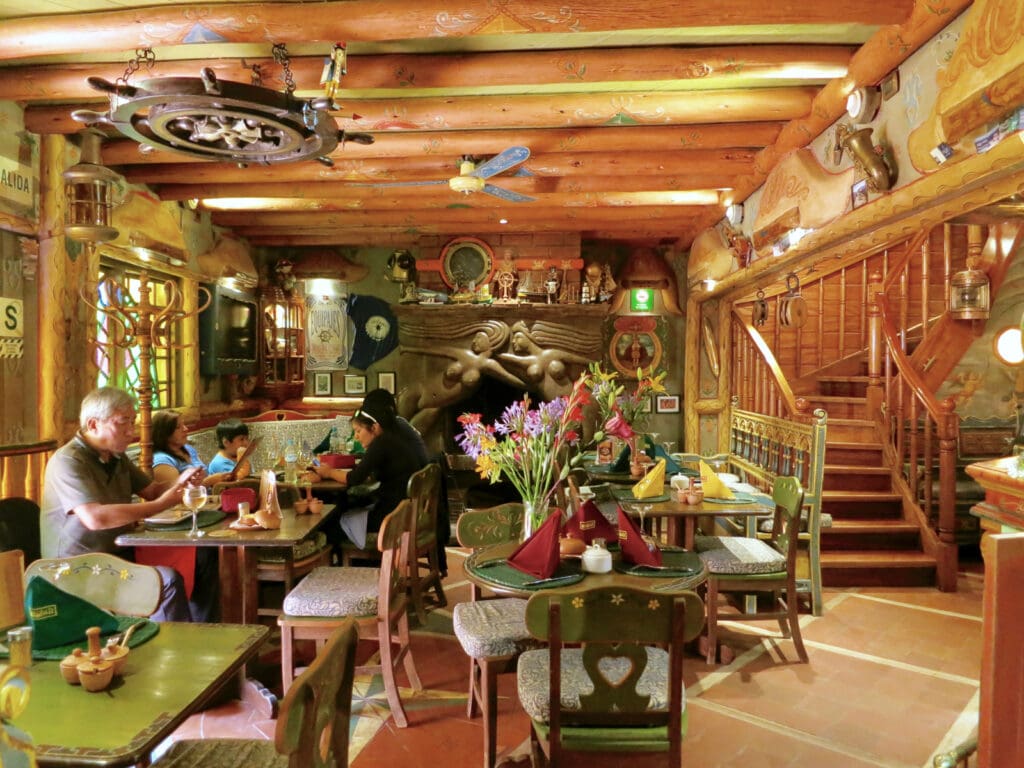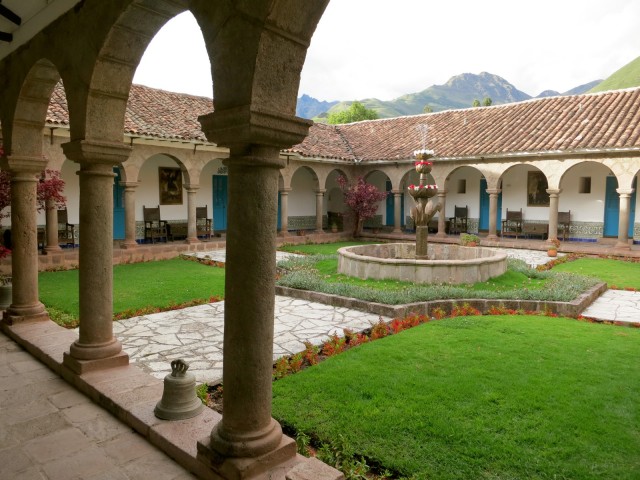Going to Machu Picchu? Cusco, Peru is the launch point for all trips there and to the Sacred Valley.
You have to repeatedly tell yourself that these pilots have flown into this snug-tight airport a million times. That’s the only way to enjoy the approach into Cusco – a city of 500,000, and at 11,200 ft. elevation, one of the highest cities in the world.
The city of Cusco sits in a valley surrounded on all sides by towering mountains. So the plane’s landing gear nearly touches the mountain tops as the pilot takes a sharp left, nose down, floating perfectly onto the runway.
You’ll feel the high altitude’s thin air as soon as the airplane doors open. You might get lightheaded, headachy, or dizzy, which is normal for lowlanders.
Fortunately, Cusco entrepreneurs have created quite an industry around alleviating the effects of altitude sickness.
The first thing you see in the airport terminal as you make your way to baggage claim is something you will never ever find in the States (as a matter of fact, it’s illegal here): huge bushels of coca leaves. You know – the stuff from which cocaine is derived.
You’ll find coca tea bags, coca candy, and the ever-present coca leaves in every hotel, restaurant, and market.
Sure, take advantage of this source of personal energy. But don’t forget to drink water often, keep hydrated, and use Ibuprofen for unrelenting headaches. (I was fine after a day, even though I could not take Diamox – a sulfa drug – as I’m allergic).
Where Is Cusco, Peru
Cusco, often spelled as Cuzco, is situated in the southeastern region of Peru, in the Andes mountain range of South America. Sitting at an elevation of approximately 3,400 meters (11,200 feet), it is often considered the gateway to the famous Inca sites of Machu Picchu. Once the capital of the Inca before the Spanish Conquest, the city is now a blend of indigenous Quechua culture and Spanish colonial influences, evident in its architecture, festivals, and local customs.
Designated as a UNESCO World Heritage Site, Cusco is rich in archaeological and cultural treasures, including ornate churches, ancient temples, and bustling markets where local artisans sell traditional crafts. The city serves as a hub for travelers venturing into the Sacred Valley or embarking on the iconic Inca Trail, making it a vital and vibrant nexus of history, tourism, and Andean culture.
Things to Do in Cusco, Peru
VISIT: Cusco Cathedral
The Cusco Cathedral, officially known as the Cathedral Basilica of the Assumption of the Virgin, stands as an architectural and cultural marvel in the Plaza de Armas. Built on the foundation of an Incan palace, this 16th-century edifice fuses Gothic, Baroque, and Plateresque styles, housing an impressive collection of colonial art that includes the famed “Last Supper” featuring a guinea pig. This cathedral offers spiritual solace and serves as a lens through which to view the intricate tapestry of Cusco’s history and identity.
SHOP: Cusco Handicraft Markets
Bright woven tablecloths, llama-festooned overnight bags, ceramic mugs and bowls, eye-catching leg warmers: you’ll find bargains galore – all negotiable – throughout dozens of stalls. This is what you brought that extra suitcase for. Just don’t expect that $10 “Baby Alpaca” sweater to be anything other than synthetic, no matter what the salesperson says. The real deal will cost upwards of $100 US.
There are several markets across the city; our favorites include the San Pedro Market and the Ollantaytambo Market.
TOUR: Cochahuasi Animal Sanctuary
Run by one family, this animal sanctuary rehabilitates wounded and orphaned wild animals. Discover friendly macaws that will feel perfectly comfortable on your arm in addition to llamas, alpacas sorely in need of orthodontia, and several condors with 9-foot wingspans.
An animal handler calls the condors one by one over to the visitor’s side of the aviary, providing one of the most dramatic photo opportunities of the day. Who knew that those intimidating birds of prey like their heads rubbed?
EXPLORE: Qorikancha
This ancient Incan temple, also known as the Temple of the Sun, was once covered in gold. It’s now a fascinating museum and a testament to Incan engineering.
VISIT: The Chocolate Museum
Attend a cooking class at Choco Museo, learn about the chocolate-making process from bean to bar, and even make your own chocolate in one of the museum’s workshops.
STROLL: The San Blas Neighborhood
This bohemian neighborhood is known for its steep, narrow streets, colorful buildings, and artisan shops, making it a delightful area for a leisurely walk.
Day Trips From Cusco
TOUR: Ccaccaccollo Community Women’s Weaving Project
The Planeterra Ccaccaccollo Community Women’s Weaving Project is well worth an hour or two of your time. A community liaison dressed in typical colorful Andes garb greets guests warmly. She then explains the intricacies of various textile motifs and what they represent.
Watch women, some with babies swaddled on their backs, work complicated looms. They are noticeably proud of their handicraft and happy to be recognized for it.
Outside, over a dozen others spin wool via top-like spindles as toddlers and puppies amuse themselves underfoot.
Witness the fascinating ways that alpaca wool is washed and dyed naturally. Artisans use only plants, minerals, and insects to create vivid colors. Of course, you can purchase everything made here at extremely reasonable prices.
VISIT: Ollantaytambo – Sacred Valley
These Inca ruins built strategically into and atop a hill, served as an assembly hall, temple, and fortress. Guides gauge if their guests are Machu Picchu ready- you’ve got to hike up hundreds of steps that flank a large amphitheater to get to the top.
On the guided tour, learn about Incan architecture and the methods used to cut large boulders so precisely they fit together like jigsaw puzzle pieces. Though more modern structures have crumbled during earthquakes, these formidable edifices have remained intact.
Discover how the builders cut rock, created echo chambers within walls to maximize acoustics, and used thin pieces of stone between colossal chunks of granite as earthquake shock absorbers. It was so much easier to replace those small sections than larger boulders.
VISIT: Maras Salt Pools – Sacred Valley
Local families have been harvesting salt here since long before the arrival of the Spanish conquistadors. One small, unusual saltwater stream feeds this series of pools high within a secluded mountain valley. Like every other form of farming in the fertile Andes Mountains, these salt “mines” are terraced downhill and create a striking landscape.
During the dry season, the water evaporates, leaving mineral-rich, highly-priced pink Peruvian salt, which you can purchase on-site for a song.
VISIT: Moray Archaeological Site – Sacred Valley
Discovered in the 1930s, these large circular depressions are believed to be some of the world’s oldest experimental agricultural stations.
Made up of a series of terraces, with 20 micro-climates from top to bottom, scientists believe this site helped ancients determine the best climate for cultivating a series of crops.
DO: Go Horseback Riding – Sacred Valley
A half-day excursion takes you through the most breathtaking and exhilarating landscape on earth.
GO: Rainbow Mountain – Sacred Valley
A day trip to Rainbow Mountain, or Vinicunca, is an exhilarating journey that rewards you with one of Peru’s most unique natural landscapes. Situated at an altitude of approximately 17,060 feet, this mountain is famous for its vibrant, multi-colored striations created by mineral deposits over millions of years.
The trip typically starts early in the morning with a drive to the trailhead, followed by a challenging hike to the summit. Despite the physical exertion and altitude, reaching the peak is an awe-inspiring experience, offering unparalleled panoramic views of the surrounding Andean landscape.
GO: Take The Train To Mach Pichu
Of course, you can hike the 4-day Inca Trail. But PeruRail offers a less strenuous way to get to Machu Picchu and Aguas Calientes for those short on time and stamina.
Book a ride on the VistaDome, which allows views of the mountains and valleys all around you. It’s only 1 ½ hours in civilized comfort: your ticket includes a drink and muffin.
DO: Vida Spa Massage – Aguas Calientes
If ever there was a place that required an oversupply of massage therapists, it’s in Aguas Calientes, where sore and broken bodies, fresh from hiking the Inca Trail, wander into town like zombies from Dawn of the Dead.
I didn’t have that excuse: the trip to Aguas Calientes on PeruRail wasn’t a trial. But I did want a good massage and got one of the best in my life at a little hole-in-the-wall called Vida Spa.
“Spa” is pushing it: Vida won’t win any awards for décor or even space (“rooms” are just curtained-off sections). But these practitioners know how to combine Swedish, Shiatsu, Reflexology, and Hot Stone Massage to nirvana effect. Good thing I was steered here. Peeking in, I probably wouldn’t have entered the door.
WANDER: Aguas Calientes
It’s a touristy town because it is the closest town to Machu Picchu – just a 25-minute bus ride up the mountainside. Shop in the shuk-like handicraft market, and dodge the many trains running right down the middle of the main street.
DIP: Hot Springs
The best thing about Aguas Calientes is that the local hot springs offer a therapeutic respite for weary travelers. Often referred to as “The geothermal activity in the area naturally heats Baños Termales,” these thermal baths. Set against a backdrop of lush forested hills, the pools are terraced on different levels, each with varying water temperatures.
Rich in minerals such as magnesium and sulfate, the hot springs are believed to have healing properties that can alleviate muscle aches and stress. A visit to these springs provides a soothing experience and a chance to unwind amidst the natural beauty of the Peruvian Andes.
Take a dip in the hot springs for which Aguas Calientes is named.
VISIT: Machu Picchu
First of all, get your tickets in advance. Tourism is increasing each year, and you may face restrictions on entry otherwise. Here’s another tip. Get up at 5:30 a.m., and take the first bus (around 7 a.m.) with your passport for the 25-minute ride to the top of the mountain.
As soon as you enter the site, climb the stairs to your left for the “money shot” overview of this fairytale stone village. Come with a guide or secure one at the entrance: he or she can cover the highlights in a couple of hours. Machu Picchu stands apart in Peruvian history as the one Incan compound that the colonizing Spaniards never found.
Best Restaurants in Cusco, Peru, and Nearby
EAT: Nuna Raymi – Cusco
A cute upstairs café, this is apparently the place for “Cuy” – also known as Guinea Pig – a delicacy in Peru. This one arrives tableside whole, like a suckling pig, with an apple in its mouth. It’s then taken back to the kitchen to be carved.
EAT: el Huacatay – Sacred Valley/Urubamba
You’ll feel as if you’ve stumbled into a secret garden. Walk through the door from a very run-down street to find a votive-lit pathway that leads to one of the best restaurants in the Valley. All dishes – from salads to alpaca steaks – could compete with the best of New York City cuisine and is quite a find after a day of hiking and adventuring.
EAT: Indio Feliz – Aguas Calientes
This is one of those crazy-cat business cards as wallpaper, funky found objects, and avant-garde art scattered places where tourists seem to gather. This is partly due to the food, which is excellent and creatively plated, and partly due to its raucous atmosphere.
Where to Stay in Cusco and the Sacred Valley
STAY: Hotel Ruinas – Cusco
Rooms are basic, with upscale appointments like flat-screen TVs, and often confusingly laid out. But the location can’t be beaten (two blocks from the main square), included breakfast is good and varied, and it’s got the nicest, kindest staff around.
STAY: San Agustin Recoleta – Sacred Valley
The bell tower is still intact in this former monastery. And the inn’s property, replete with many garden courtyards, is enchanting.
It’s quite a retreat from a town with one or two decent restaurants and not much more. Cute, colorful rooms are set around garden courtyards and feature modish bathrooms with one of the best showers in the Andes.
More Romantic Getaways In Peru
- Unsurpassed Beauty of Peruvian Amazon and Sandoval Lake Lodge
- 5 Top Things to Do In Lima Peru In Two Days
All articles belong to Getaway Mavens LLC, and all photos belong to us as well, unless otherwise noted. It’s all copyrighted. Please don’t repost anything elsewhere without asking us first. All rights reserved. This site uses cookies to enhance your experience.
We make no guarantees of any price listed on our site. We’re not responsible for content on external websites linked to ours, including linked resources, an external blog post, any partner site, hotel property sites, or affiliate sites. We only write about places we have vetted, but can’t guarantee that your experience will be exactly the same.
Posts may contain affiliate links at no cost to you. Several of our trips are also compensated by the respective tourism boards for the city or state we are visiting. This never impacts how we share the destination with you – opinions are always our own and we pride ourselves on that. We do not sell links or accept unsolicited guest posts under any circumstances. Don’t even ask.
United States Copyright, Getaway Mavens, LLC

